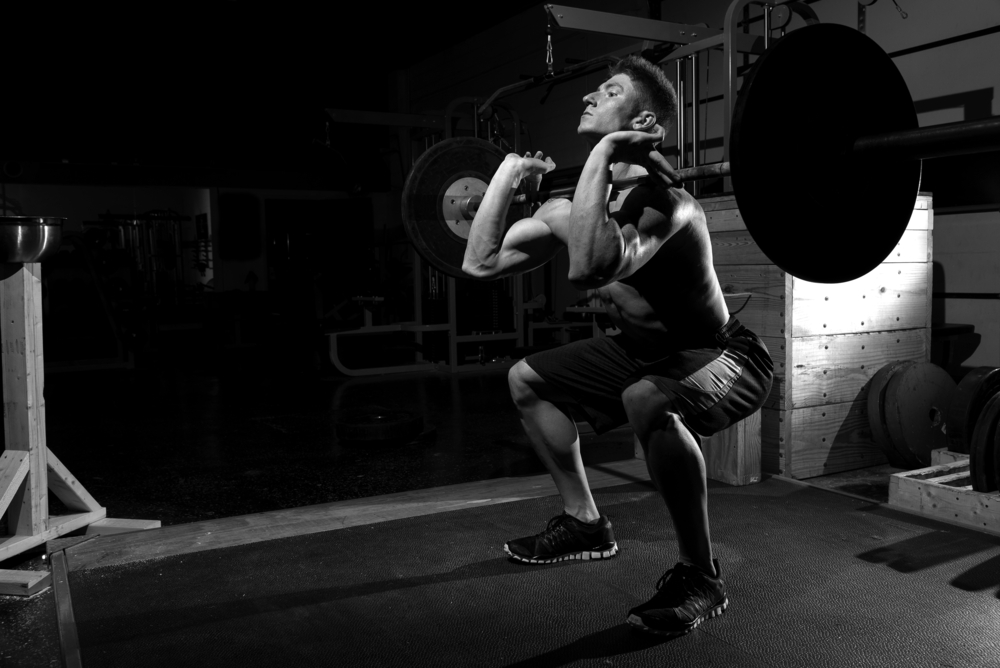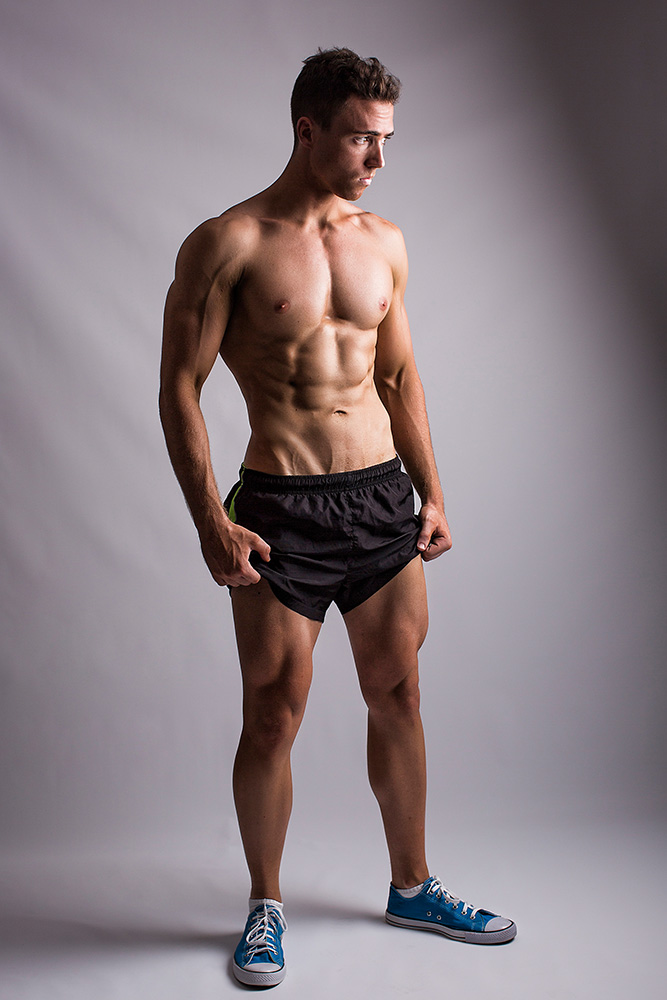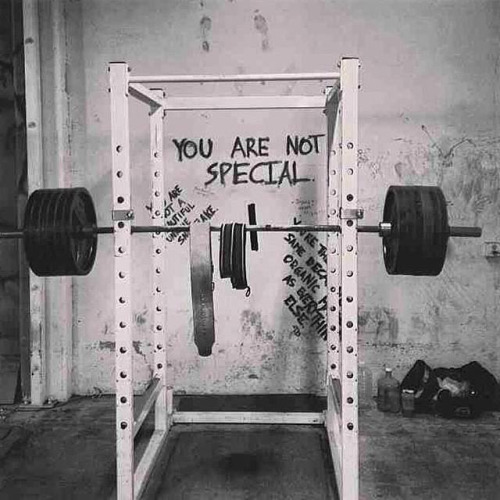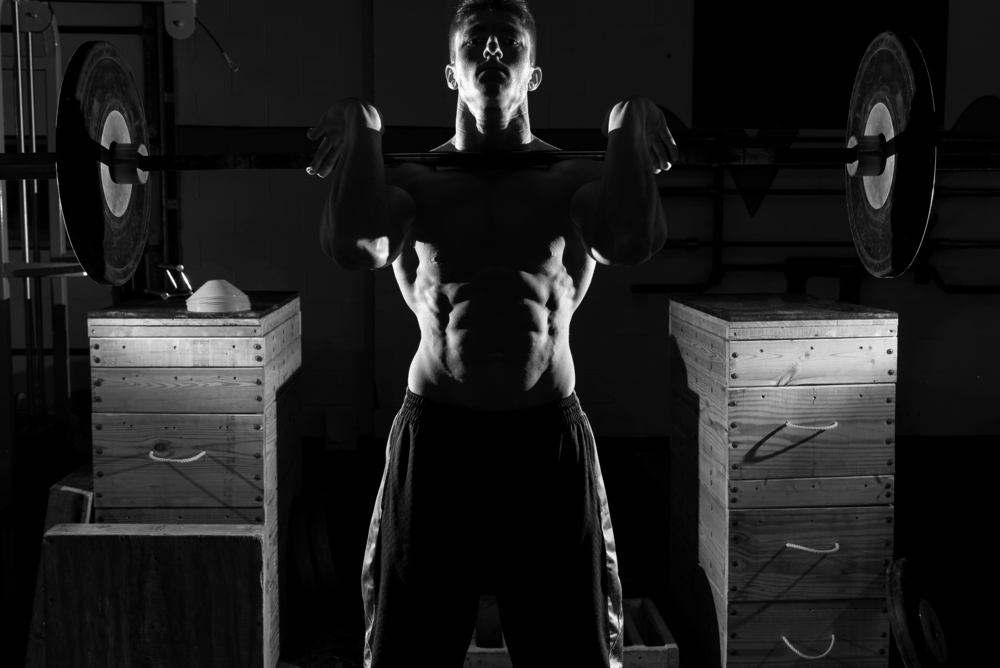Front Squat Benefits
When it comes to building lower body strength and mass most guys go straight to the barbell back squat, leg press and walking lunges...
These are a great selection of exercises, no doubt, but in my opinion the barbell front squat is extremely overlooked.
Think about it, how many individuals do you see in your gym performing barbell front squats?
Now, how many individuals in your gym have jaw dropping legs?
Not many.
This comes down to a number of reasons...
- Not realizing there's any difference between the front and back squat
- Not knowing how to perform the front squat correctly
- Not having the hand flexibility to grasp the bar correctly
- Being unable to perform the back squat (injury etc.) and not knowing the front squat is a safer alternative
Let's delve into the difference that bearing the weight in front of your torso can make with these front squat benefits.
6 Big Front Squat Benefits
1. You'll Build Unbreakable Core Strength
When most gym-goers think of building core strength they think of sit-ups, planks and leg raises - yes, this exercises will build core strength to a degree... but they can't put anywhere near the amount of stress and tension on the core as heavy barbell compound movements, in particular the barbell front squat.
When you've got 225lbs loaded on an Olympic barbell resting across your shoulders a hell of a lot of core strength is required to maintain an erect spine.
2. Lower Back Or Knee Issues? No Problems
Lower back and knee issues are two things no athlete wants! Whether you're nursing one, recovering from one or skeptical of the barbell back squat due to the stress placed on the knees and lower back then the barbell front squat will quickly become your best friend.
A 2009 study published in the Journal of Strength and Conditioning concluded that the front squat was as effective as the back squat in terms of overall muscle recruitment, with significantly less compressive forces and extensor moments.
That's right - we're able to reap the overload the barbell back squat applies to our lower body while minimizing overall wear and tear by substituting with the barbell front squat.
3. You'll Build Beastly Quads
The traditional barbell back squat hits the quads to an extent (as well as the hamstrings and glutes) while the barbell front squat places further emphasis on the quads.
Who doesn't want big quads?
Through a combination of low body fat and heavy exercises targeting the quads (aka. the front squat!) you can build a serious set of tear drop quads. Big biceps and chiseled chests aren't uncommon... but very few gym-goers develop their vastus medialis enough to have an impressive set of quads.
4. Tests & Builds Flexibility
When you're at the bottom position of your front squat your flexibility will be tested (and further developed!) in this position your ankles, wrists, shoulders and hips are in position that requires and builds supple mobility.
The same cannot be said about the barbell back squat, as your wrists and shoulders aren't stretched whatsoever while your hip and ankle flexibility only comes into play when you're going down to parallel or lower (which most guys don't).
5. It's A Great Entry To Barbell Lifts
The position we're grasping the barbell in is known as the rack position, mastering the rack position is an exercise in itself! Once you've become familiar with the rack position you've just opened up a ton of new possibilities in terms of barbell exercises you can perform.
The skills you've built learning the barbell front squat will transfer across into CrossFit & Olympic exercises, be it the clean, power clean, push jerk, split jerk, push press etc.
6. It's Easy To Bail Out Of The Front Rack Position
If you've never failed on a set of squats you're likely not lifting heavy enough or constantly pushing for progressive overload.
When you're hitting your heavy back squats a spotter and a power rack are highly recommended, as although it's possible to step forward and let the barbell fall off your back and onto the rails/ground as you step forward out of harms way it's far from ideal, as there's always the risk of falling backwards as you do so.
The barbell front squat is far easier (and safer!) to bail out of.
Simply release your hands and let the barbell fall forward onto the rails/ground as you step backwards.
Here's How To Perform The Front Squat Correctly
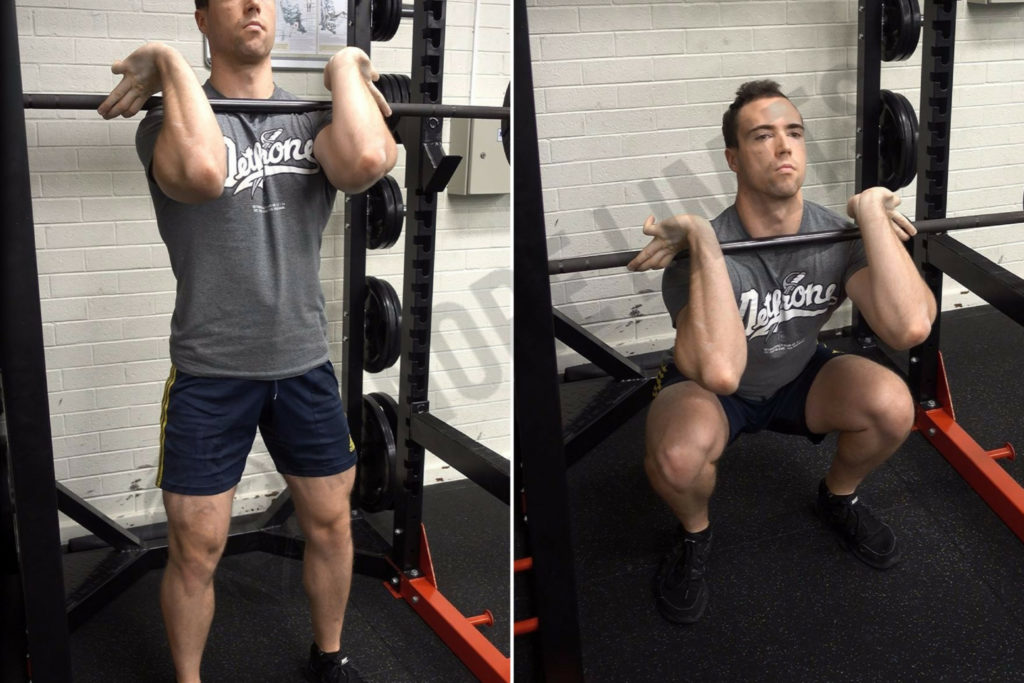
Unrack a barbell set at shoulder height in your squat rack by placing your arms under the bar, raising your elbows up as high as possible and maintaining an upper arm position just beyond parallel to the floor (the bar should be resting on top of your deltoids, not pushing against your neck).
As you step away from the squat rack assume a shoulder width stance with your feet angled slightly outward, maintain a high chest and continue looking forward.
Lower yourself down while maintaining a straight back and continue looking forward by flexing your knees and dropping your hips back.
Once you've reached your lowest point pause for a second before driving back up through the heels.
Common Front Squat Mistakes
Not Holding The Barbell In The Rack Position
When performing the barbell front squat the bar is to be grasped in the front rack position - not with 100% of the bars weight shoved up against your neck or pushing down on your shoulders.
Your elbows must remain high for the bar to rest effortlessly in your fingertips.
Limited Range of Motion
When training legs, strict form and a full range of motion must be utilized to activate and overload the muscles being targeted.
Squat half reps, a minuscule leg press range of motion, not dropping your knee low enough on dumbbell lunges… if you’re constantly limiting your range of motion you’re not going to be able to build either the size or strength you’re chasing.
A limited range of motion is usually due to one of the following three reasons:
1. Lifting Too Heavy
When squatting or using the leg press ‘getting out of the hole’ aka. the bottom portion of the movement is without a doubt the hardest. If you’re performing half reps because you’re unable to get the weight out of the hole it’s a clear sign you’re lifting too heavy. Stacking more and more weight on the bar or the machine may make you feel good… but you won’t see that weight translate into size or strength gains. Check your ego at the door and lift weight which you’re able to manage (while still being a challenge in the prescribed rep range) utilizing a full range of motion.
If you’re new to the gym and you’ve spent the last decade working in an office day in day out chances are your mobility isn’t the greatest. Constant practise combined with stretching, foam rolling and a mobility routine will have you getting low on those squats in no time, tight hip flexors (from sitting all day) are notorious for this.
3. Being Lazy!
There’s nothing pretty about dropping your ass to the grass with 225lbs on your shoulders, multiple times at 5am in the morning. But the feeling of accomplishment, constant progression, mental fortitude and discipline it builds is worth it.
Squatting heavy with a full range of motion sucks, but if you’re using the right weight and you’ve developed the mobility to work a full range of motion you have no excuse.
